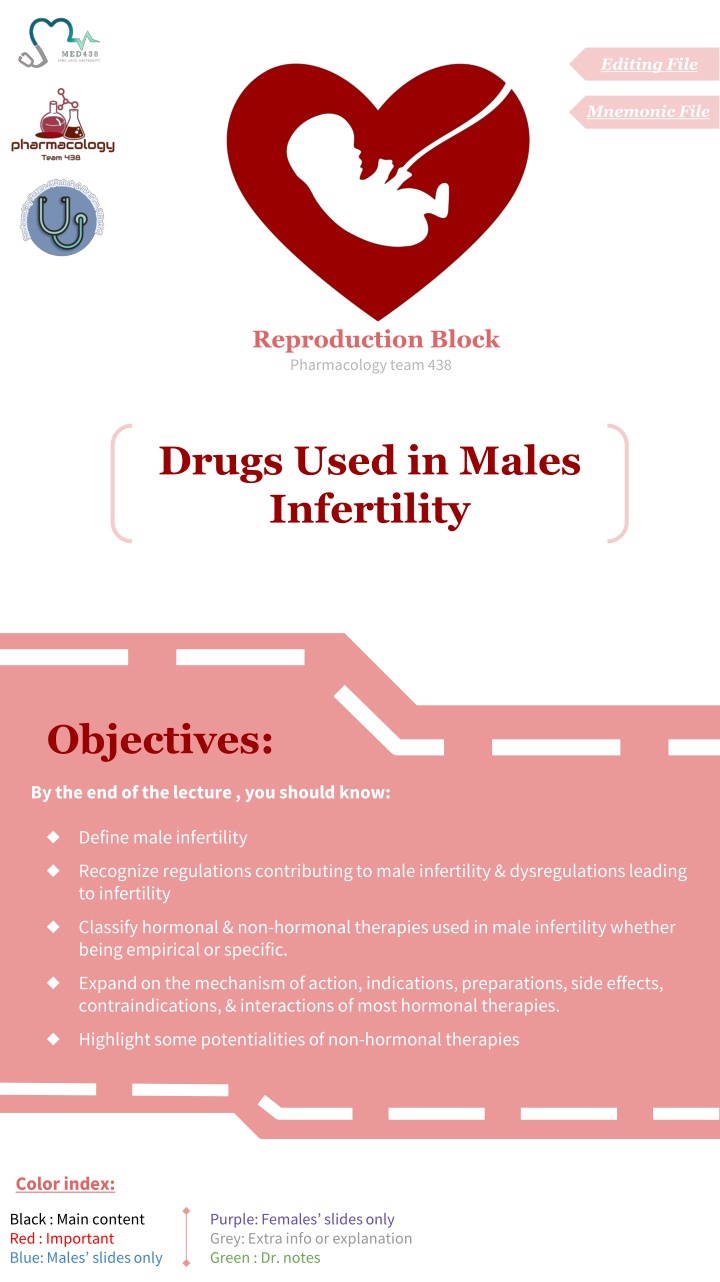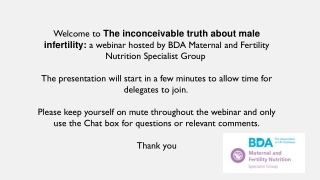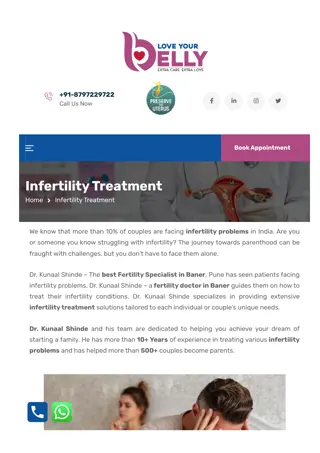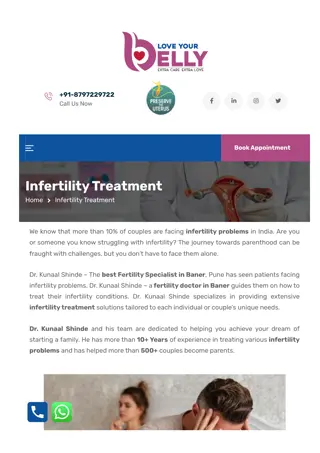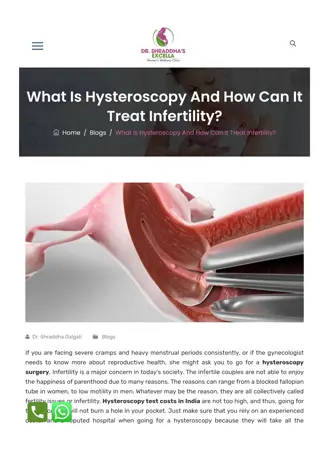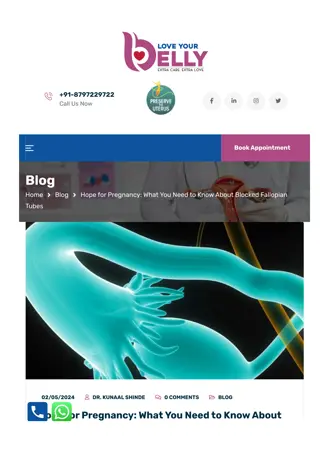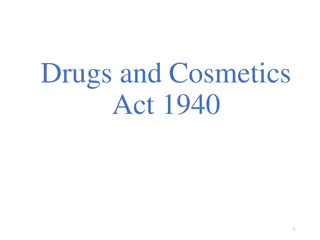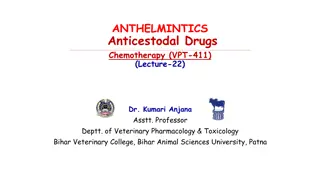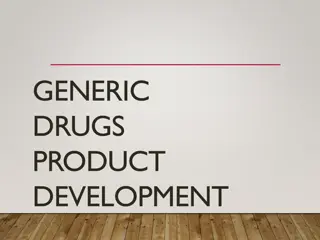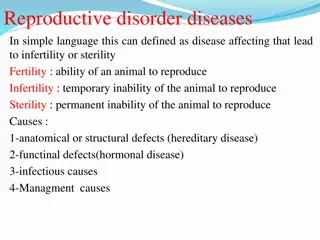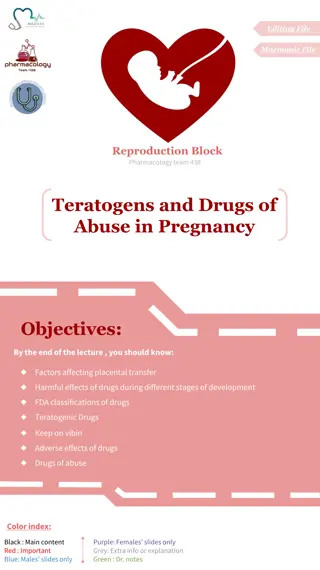Drugs Used in Male Infertility
Male infertility is a widespread issue often overlooked, with various causes ranging from hormonal dysregulation to physiological factors affecting sperm production. This lecture delves into defining male infertility, identifying contributing regulations, and exploring therapeutic strategies, including both hormonal and non-hormonal options. Understanding the complexities of male infertility is crucial in providing effective intervention.
Download Presentation

Please find below an Image/Link to download the presentation.
The content on the website is provided AS IS for your information and personal use only. It may not be sold, licensed, or shared on other websites without obtaining consent from the author.If you encounter any issues during the download, it is possible that the publisher has removed the file from their server.
You are allowed to download the files provided on this website for personal or commercial use, subject to the condition that they are used lawfully. All files are the property of their respective owners.
The content on the website is provided AS IS for your information and personal use only. It may not be sold, licensed, or shared on other websites without obtaining consent from the author.
E N D
Presentation Transcript
Editing File Editing File Mnemonic File Mnemonic File Reproduction Block Pharmacology team 438 Drugs Used in Males Infertility Objectives: By the end of the lecture , you should know: Define male infertility Recognize regulations contributing to male infertility & dysregulations leading to infertility Classify hormonal & non-hormonal therapies used in male infertility whether being empirical or specific. Expand on the mechanism of action, indications, preparations, side effects, contraindications, & interactions of most hormonal therapies. Highlight some potentialities of non-hormonal therapies Color index: Black : Main content Red : Important Blue: Males slides only Purple: Females slides only Grey: Extra info or explanation Green : Dr. notes
Male Infertility Definition:Inability of a male to achieve conception in a fertile woman after one year of frequent unprotected intercourse. Prevalence:Infertility has traditionally been thought of as a woman s problem. However, about one out of every three cases of infertility is due to the man alone. Infertility Impotence VS The male sexual behavior is fine but the problem is in the sperm (low count, abnormal shape, abnormal motility). The male has problems in his sexual behavior (Erectile Dysfunction) Semen Analysis in Infertility In male infertility, the semen analysis is abnormal: Count is low (oligospermia) Sperms are absent in the ejaculate (azoospermia) Sperm motility is seriously affected (asthenospermia). Sperms are totally immobile or dead (necrospermia) Causes of Male Infertility Idiopathic Pre-testicular causes (poor hormonal support & poor general health) including: Hypogonadism, Drugs, Alcohol, Tobacco, Strenuous riding (bicycle & horse riding), Medications (chemotherapy, anabolic steroids). Unknown causes Testicular causes Post-testicular causes (Problems of sperm transport\ erection and ejaculation): (Problems related to sperm production): Vas deferens obstruction, infection e.g. prostatitis, TB, Ejaculatory duct obstruction, Impotence. Age, Malaria, Testicular cancer, Idiopathic(unexplained sperm deficiencies).
Recall Hypothalamic pituitary gonadal axis Special thanks for 436 pharmacology team 1. Pulsatile secretion of GnRH from hypothalamus will stimulate anterior pituitary to secrete (FSH, LH) that will lead to initiation & maintenance of spermatogenesis FSH: will act on sertoli cell in seminiferous tubule for spermatogenesis. It is also release inhibin -ve feedback on anterior pituitary LH: will act on leydig cells leading to secretion of testosterone -ve feedback on anterior pituitary and hypothalamus Some of testosterone converted to (DHT) and Estradiol +ve feedback on leydig cells and -ve feedback on anterior pituitary, hypothalamus LH releases Testosterone in a pulsatile rhythm (chronic LH levels makes testis refractory) Hypothalamus 2. 3. GnRH 4. Pituitary gland LH FSH So, Drugs used to treat male infertility includes: Testosterone and synthetic androgen Anti estrogen a. SERM b. Aromatase inhibitors GnRH GnH together with hcG Non hormonal therapy 1. 2. Testis inhibin Sertoli cells Leydig cells Spermatogenesis Testosterone 3. 4. 5. Estrogen & DHT Drug Treatment of Male Infertility (Needs 3 months before semen quality changes) Hyperprolactinemia DA 2-agonists Hypothyroidism Thyroxine Specific Congenital adrenal hyperplasia Corticosteroids excess Glucocorticoids excess Correct levels Idiopathic Androgens, Antiestrogen, GnH (FSH) Eugonadotrophic hypogonadism ( T only) Antiestrogens (SERMs & Aromatase inhibitors ) Hormonal Therapy Hypogonadotrophic hypogonadism [secondary Hypogonadism Hypothalamo-Pituitary ] ( T & FSH/LH) Pulsatile GnRH, hCG, hMG1, Androgens, Clomiphene, Mesterolone Empirical Hypergonadotrophic Hypogonadism [primary Hypogonadism testicular dysfunction ] ( T & LH) Assisted Reproduction (no treatment) PDE5 inhibitors, e.g. sildenafil (viagra), vardenafil (levitra), tadalafil (cialis) Erectile dysfunction Specific Non- Premature Ejaculation SSRIs e.g Fluoxetine (prozac) hormonal Therapy Infection of testes, prostate & UT Antibiotics Kallikrein, Antioxidants e.g. vit E & vit C, Zinc supplements, folic acid, L-Carnitine Empirical - 1-AKA Menotropin
Testosterone Drugs Testosterone and Synthetic androgens Principle male sex hormone produced in testis (> 95%), small amount in adrenals. It follows a circadian pattern increase in early morning & decrease in evening. info In the prostate and seminal vesicles testosterone is converted by 5 -reductase to DHT. In bones and brain it is metabolized to estradiolby c-p450 aromatase Bone: estradiol accelerates maturation of cartilage into bone leading to closure of the epiphysis & conclusion of growth. Brain: estradiol serves as the most important feedback signal to the hypothalamus (esp. affecting LH secretion). MOA 1-Virilizing Effects: Gonadotropin regulation Spermatogenesis Sexual dysfunction Sexual restoration and development Action 2-Protein anabolic effects: (anabolic steroids not used in infertility) Increase bone density Increase muscle mass Increase red blood cell mass Synthetic Androgens Less rapidly metabolized & more lipid soluble increasing its duration of action. 1. Derived from Testosterone: Esters, propionate, enanthate,cypionate in oil for IM (every 2-3 weeks) Other derivatives as Fluoxymesterone, Methyltestosterone, Danazol given Orally (daily) Natural Androgens Ineffective orally (inactivated by 1st pass metabolism), given I.M or S.C, skin patch & gels are also available. Binds to Sex Hormone Binding Globulin [SHBG] t1 2 =10 20 min Inactivated in the liver. 90% of metabolites excreted in urine. Disadvantages:Rapidly absorbed, rapidly metabolized (Short duration of action). 2. P.K Derived from DHT as Mesterolone: given Orally (daily) Mesterolone: More safe and can be given in testosterone or in 2ndry hypogonadism; because of the following: 1. Not aromatised into estrogens "no ve feedback of GnHs " encourages natural testosterone production. thus spermatogenesis is enhanced. 2. Unlike other oral synthetic androgens it is not hepatotoxic. As Testosterone Replacement Therapy (TRT): Therapy for androgen deficiency in adult male infertility. In delayed puberty with hypogonadism give androgen slow & spaced for fear of premature fusion of epiphyses (short stature). Uses
Testosterone Cont... Drug Testosterone and synthetic androgens 1. Excess androgens (if taken > 6 weeks) can cause impotence, decreased spermatogenesis & gynecomastia Alteration in serum lipid profile: HDL & LDL, hence, risk of premature coronary heart disease Salt & water retention leading to edema Hepatic dysfunction: AST levels, alkaline phosphatase, bilirubin & cholestatic jaundice Hepatic carcinoma (long term use) Behavioral changes: physiologic dependence, aggressiveness, psychotic symptoms Polycythemia (increased number of RBC) risk of clotting Premature closing of epiphysis of the long bones Reduction of testicular size 2. 3. 4. ADRs 5. 6. 7. 8. 9. Male patients with cancer of breast or prostate. Severe renal & cardiac disease as they predispose to edema. Psychiatric disorders. Hypercoagulable states. Polycythemia. C.I Testosterone + Corticosteroids edema. Testosterone Warfarinmetabolism bleeding. Insulin or oral hypoglycemics+ Testosterone hypoglycemia. Testosterone PropranololClearance Propranolol Efficacy. inter- action Antiestrogen 1 Class SERMs Aromatase Inhibitors Drugs Tamoxifen, Clomiphene Anastrozole Because estrogens have -ve feedback on hypothalamus decrease GnRH pulse frequency & pituitary responsiveness to GnRH So antiestrogens increase GnRH & improve its pituitary response. MOA Blocks conversion of testosterone to estrogen within the hypothalamus. Competes with estrogen for its receptor in hypothalamus P.K Given as daily dose over a period of 1 6 months. All are used for inducing spermatogenesis in oligospermia (count is low). Best to improve sperm count & motility with good pregnancy rates Uses Both drugs (Tamoxifen, Clomiphene) can induce libido & bad temper in men ADRs _ 1) Antiestrogen therapy is better than Androgen replacement therapy.
Other Drugs In Treating Male Infertility Drugs GnRH GnHs Given as PulsatileGnRH therapy (4- 8 ug subcut every 2 hours) using a portable pump Exogenous excess of GnRH down- regulation of pituitary GnRH receptors & decrease LH responsiveness GnHS replacement must combine: hCG (IM for 2 Ms.) followed by hCG + hMG (IM for 6-12 Ms.) P.K Used in 2ndry hypogonadism (FSH or both FSH or LH absent) to promote spermatogenesis Used in hypothalamic dysfunction for androgenization & spermatogenesis Uses Headache local swelling (at injection site) Nausea Flushing Depression Gynecomastia precocious puberty Headache Depression generalized weakness pain Gynecomastia osteoporosis ADRs Non-hormonal Therapy Antioxidants -e.g. vit E, C Protect sperm from oxidative damage Has proteolytic activity, cleaving kininogen to kinins important for sperm motility. Kallikrein Plays a role in RNA and DNA synthesis during spermatogenesis & has antioxidant properties. Folic acid Plays an important role in testicular development, sperm production & sperm motility. Zinc L-carnitine Is important for sperm maturation.
Quiz MCQ Q1- A patient with hypothalamic dysfunction is treated with GnRH, which one of the following conditions he may present with following the treatment? A- Local swelling. B-Precocious puberty. C-Osteoporosis. D-Polycythemia. Q2- L-carnitine is important for: A-Sperms motility B-Sperms protection C-Sperms production D-Sperms maturation Q3- Which of the following oral synthetic androgens is not hepatotoxic ? A-Fluoxymesterone. B-Mesterolone. C- Methyltestosterone. D- Danazol. Q4- A patient is using Anastrozole for treating oligospermia, Which one of the following is the mechanism of action of this drug? A-DA-2 agonist B-Phosphodiesterase-5 inhibitor C-Blocks conversion of testosterone to estrogen within the hypothalamus D-Selective Serotonin Reuptake Inhibitor SAQ 27-years-old man married 2 years ago visit the clinic due to inability to conceive, doctor order hormonal profile for patient and the results from lab shows decreased (testosterone,FSH ,LH). Q1-Which drug would be effective in treating infertility due to hypothalamic dysfunction? Q2-Mention 2 ADR of that drug? - - 35-years-old male visit the clinic due to inability to conceive after investigation it turns out that he has infertility due to abnormal sperm motility. Q3-Which non-hormonal drug should he used in this case? Q4-What is the M.O.A of that drug? - If Testosterone and Warfarin are used together, What is the effect that might be occur? MCQ SAQ Q1 C Q1 Pulsatile GnRH Q2 D Q2 Gynecomastia - pain Answers: Q3 B Q3 Kallikrein Q4 C Q4 Has proteolytic activity, cleaving kininogen to kinins Q5 Bleeding
Thank you for all the love and support you gave the team in those two years! Hope we made the context much easier to study. God bless you, Future doctors. Team Leaders: May Babaeer Zyad Aldosari This Amazing Work was Done By: Reema AlSerhani Deana Awartani Note writers Nouf AlShammari Quiz writers Noura AlMazrou Shahad AlSahil
